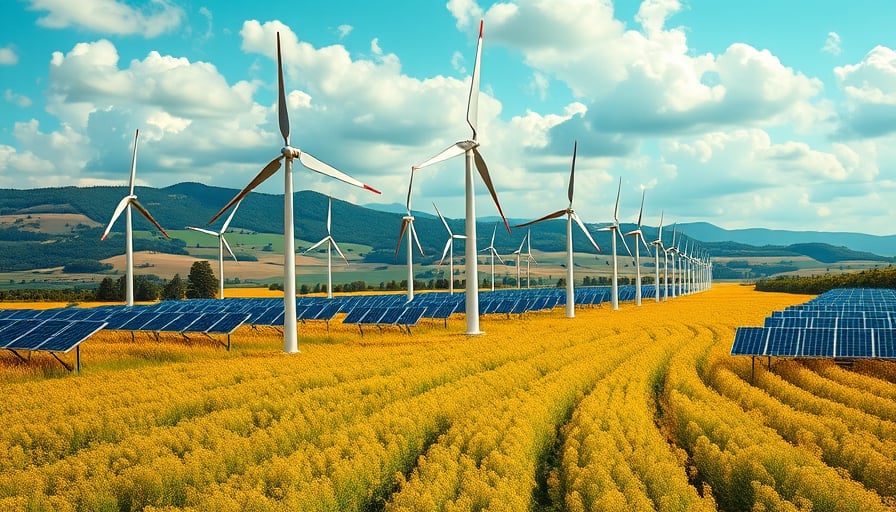Ørsted’s Green Transformation and Recent Developments
Ørsted A/S, a leading Danish electric utilities company, has announced that it has achieved a 98 % reduction in its CO₂ emissions relative to 2006 levels. This milestone confirms the company’s claim to be the first energy firm worldwide to complete a full green transformation. At the same time, Ørsted reports that 99 % of its electricity generation now derives from renewable sources, underscoring the breadth of its transition from a historically carbon‑intensive producer to a renewable‑energy leader.
CO₂ Reduction and Future Emissions Targets
The 98 % cut in greenhouse‑gas emissions is a result of a comprehensive strategy that includes decommissioning high‑emission fossil‑fuel assets, scaling up offshore wind capacity, and implementing advanced carbon‑capture and biogas upgrading technologies across its bioenergy portfolio. Ørsted has set a net‑zero emissions target for 2040 and will focus on further reductions throughout its entire value chain to achieve this goal. The company’s progress aligns with international climate commitments and positions it as a benchmark for other utilities.
Renewable Energy Portfolio Expansion
Offshore Wind
Ørsted’s offshore segment continues to dominate the company’s growth. Projects are active in the United Kingdom, Germany, Denmark, the Netherlands, the United States, and Taiwan. The firm’s research partnership with the University of Oxford focuses on optimizing foundation structures for offshore turbines, a key factor in enhancing turbine durability and reducing lifecycle costs.
Onshore Wind, Solar and Storage
In the United States, Ørsted is developing onshore wind and solar farms, while in the United Kingdom it has launched a storage solution that complements its wind assets. These projects diversify the company’s renewable mix and increase grid flexibility.
Bioenergy
The bioenergy division operates combined‑heat‑and‑power plants in Denmark and a research facility in the United Kingdom. It also runs biogas upgrade plants, converting biogas into high‑quality biomethane for injection into the gas grid or direct use in electricity generation.
Customer Solutions
Ørsted’s Customer Solutions segment distributes and sells power and gas in wholesale and retail markets across Denmark, Sweden, Germany, and the United Kingdom, providing a stable revenue base that supports further renewable investments.
New Photovoltaic Development in Wildpark
In a notable expansion of its solar portfolio, Ørsted has constructed its first agricultural‑photovoltaic (Agri‑PV) park in Damwildgatter, a wildland in Saarland, Germany. The project integrates photovoltaic modules with local land use, allowing for biodiversity conservation alongside renewable generation. This initiative exemplifies Ørsted’s commitment to innovative, land‑efficient solar solutions that complement its wind infrastructure.
Market Performance and Analyst Outlook
Stock Price and Market Capitalisation As of 10 November 2025, Ørsted’s share price stood at DKK 121.40. The company’s market capitalisation exceeded 161 billion DKK. Over the last 52 weeks, the share has ranged between DKK 102.82 and DKK 400.20, reflecting significant volatility driven by broader energy market dynamics.
Analyst Coverage Goldman Sachs revised its price target for Ørsted to DKK 120 (USD 130), maintaining a neutral stance on the stock. The firm’s guidance reflects confidence in Ørsted’s renewable expansion while acknowledging the company’s recent operating losses.
Profitability In the third quarter of 2025, Ørsted posted a net loss of 1.7 billion DKK (USD 261.5 million), a stark contrast to the 5.17 billion DKK profit reported in the same quarter a year earlier. The loss is attributed to heightened capital expenditures on new wind and solar projects and the integration costs of its green transformation initiatives.
Market Sentiment Despite the quarterly loss, Ørsted’s shares experienced only marginal declines in early trading on 11 November 2025, with broader Danish elite indices showing gains. Investor sentiment remains cautiously optimistic, driven by the company’s strategic shift towards low‑carbon assets and its leadership role in the European renewable sector.
Conclusion
Ørsted’s recent announcement of a 98 % CO₂ reduction, coupled with a 99 % renewable energy mix, marks a pivotal moment in the company’s evolution from a traditional utility to a renewable energy powerhouse. The new Agri‑PV park in Wildpark demonstrates Ørsted’s willingness to pioneer innovative projects that harmonise energy production with environmental stewardship. While short‑term financial results reflect significant investment outlays, the company’s long‑term trajectory aligns with global decarbonisation objectives and positions it favourably within the rapidly shifting energy landscape.




